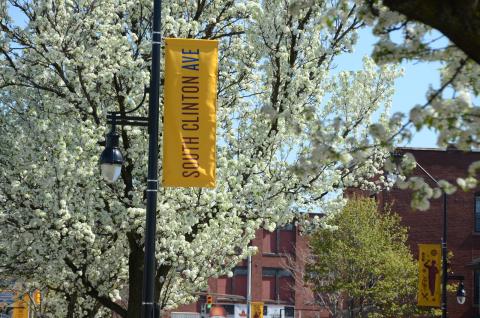Zoning applications
To assist applicants, each zoning application listed below contains general information, complete instructions, fees required by the City Code, directions for applying, and a telephone number to call to answer questions. Each application form also shows the standards which must be met for approval.
| Application Form | Approving Authority | Summary (for more details, click on the application name) |
| Administrative Adjustment | Manager of Zoning | An Administrative Adjustment can be approved for certain limited applications, as prescribed by the Zoning Code (Section 120-191A) |
| Administrative Appeals and Referrals | Zoning Board of Appeals | An appeal or referral of a decision made by the Manager of Zoning may be taken in accordance with Sections 120-191 and 120-195, where applicable. |
| Amendment | City Planning Commission | An Amendment allows for changes to the Zoning Code or the Zoning District Map because of changing, newly discovered, or newly identified conditions or information. Please see the form for details of who can propose an amendment. |
| Certificate of Appropriateness | Rochester Preservation Board | This application is used for improvement approvals, alterations, removals and parking changes affecting a Preservation District or Landmark Property, to ensure compliance with specific preservation standards (Section 120-194). |
| Manager of Zoning
| A 'nonconformity' is any use of land, building, or structure that does not comply with the Zoning Code Regulations of the zoning district in which the property is located. This application is used to establish the rights to a nonconformity. Nonconforming uses are often referred to as "grandfathered uses." See Sections 120-199 through 120-202. |
| EAF's are used to assess a project's impact on surrounding properties and our physical and cultural environments. The State Environmental Quality Review Act (SEQR) is administered by the New York State Department of Environmental Conservation (NYSDEC). Their website offers a GIS-based EAF Mapper that generates answers to the questions on both the Short and Long EAF's populated by an extensive list of databases and a workbook that offers suggestions on how to answer the questions. A PDF of the Short EAF is provided here for smaller projects. Please visit the Department of Environmental Conservation website to use the tools provided to generate the SEAF or EAF, formerly the Long EAF, depending on the requirements of the project. | ||
| Extension of Time | Manager of Zoning | Prior to the expiration of a special process, the applicant can request in writing to the Manager of Zoning to extend the original time limit. The extension cannot exceed the length of the original period and any additional extension must be notified to the original approval body(ies). |
| Interpretation | Manager of Zoning | Interpretations by the Manager of Zoning are intended to clarify the zoning text or map, including permitted uses, district boundaries, meaning and intent of various portions of the Zoning Code, and precise location of mapped district boundary lines. |
| Landmark Designation | Rochester Preservation Board and City Planning Commission | To designate landmarks within the City and to rescind such designations. |
| Resubdivision | Manager of Zoning | For minor transfers of land and lot combinations, not creating an increase in the number of parcels or irregular lot lines. Contact the Zoning Office with questions. |
| Manager of Zoning
| Site Plan Review is required for projects that may adversely impact other properties or uses because of their design, nature, size, or complexity. Site Plan Review determines neighborhood impacts, may include recommendations, and identifies special approvals necessary for Permit approval (Section 120-191D). An Environmental Assessment Form is usually required. |
| City Planning Commission
| Special Permits are authorized under Section 120-192B of the City Code to establish some unique uses that may be suitable for an area but which could have some special impact on that area, requiring a careful review of their location, design, configuration, and other considerations. Each zoning district has its own list of specially permitted uses. An Environmental Assessment Form (EAF) is usually required. |
| City Planning Commission
| The creation of five or more parcels or subdivisions that propose new private or public streets and/or parcels with no street frontage, requires a public hearing with the City Planning Commission. Application must be submitted by appointment. *An exempt subdivision (fewer than 5 parcels), where no new private or public streets are proposed, and all lots having frontage and driveways on an existing, improved public street, are not subject to a public hearing. |
| Zoning Board of Appeals
| Variances allow for relief when no other means or remedy can be granted by City Codes. Two types of Variance Applications are available, known as Use Variances and Area Variances. Additional forms as shown on this page are also required for each Use or Area Variance application (Section 120-195B). |
Area Variance - Statement of Difficulty
| Zoning Board of Appeals
| An Area Variance is an authorization for the use of land related to a dimension such as size, height, and setback; physical requirements; the expansion, structural alteration, or enlargement of a nonconforming use; a waiver of additional requirements for specified uses; any City-wide or Village Center design standards. Area Variances are granted when applicants show that the negative impacts of the proposal do not outweigh the benefits to the applicant. |
Zoning Board of Appeals
| A Use Variance is defined to be an authorization for the use of land for a purpose that is otherwise not allowed or prohibited by the Zoning Ordinance. No Use Variance can be granted unless it is shown that the property cannot yield a reasonable return as a permitted use, and it will not negatively impact a neighborhood.
|






